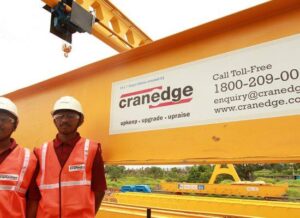The Space Age : Better Utilization with Facilities Management Solutions

It is widely accepted that real estate costs are second only to employee or labour costs in enterprises worldwide. Being such a large component, the cost element is certainly in focus but does that focus translate into business outcomes? The Advanced Workplace Associates “The Utilisation of the Office” report of 2015 found that the average desk utilization was only 48% across the surveyed enterprises. The utilization of meeting rooms was even poorer at about 39%. One , perhaps conservative, estimate is that globally this could add up to over 600,000 sq. feet of space being wasted annually. Clearly, there is scope for much improvement in how organizations leverage facilities better. Facilities Management Solutions (like those from our partner ARCHIBUS) are playing a key role in helping organizations in this quest. Let’s look at some ways they are helping.
Planning: You’ve got to have a plan and a good FM System will allow you to build a more comprehensive one. You may have defined utilization standards or metrics in mind for %age occupancy, allocated square feet per employee and the like. This is more than a seating plan. There may also be a need to house some teams together or there may be a need to house certain individuals closer to certain anchor points – for eg. designated fire marshals close to fire-fighting equipment and alarms. These are not just “soft” preferences. The WSJ reported a study by Bank of America in its call centers that found that employees seated in teams were up to 10% more productive because of the bonding – so seating location has a deep business impact. The FM System will allow you to build a more complete plan factoring in all such considerations.
Utilization: The key role of the FM System is in proving the management transparent visibility into exactly how much space and resources are being used at any given point in time, and perhaps, more importantly, how much is not being used. This is a key challenge in organizations today – the larger and more dispersed the facilities the greater the challenge. This transparent view of actual utilization can help the management take more considered decisions about growth and maybe even rationalizing current space. As the numbers quoted earlier show, facilities are chronically underutilized. An organization expecting to grow may be able to find space for the additional staff in their current facilities, while previously they may have expected to have to add space.
The organization can also expect to gain,potentially unexpected, insights into how effective their planning has been – for instance, a survey by design and architecture firm HOK found that 53% of conference rooms were built for meetings of 7 or more people, but only 27% of actual meetings contained even more than 4 people. Such insights can drive remodeling plans for better space utilization.
Space costs money, understanding utilization, as it is actually, helps to allocate the expenses accurately too. In most instances, space is notionally allocated to a business unit or a head and that unit takes the cost for it too. In the dynamic environment in which most organizations operate today, it is not unusual for such space to be utilized by other business units when the need arises. In such cases, a transparent view of who is actually using the space can support financial adjustments like charging back the expense to the right unit. This is a more appropriate way to allocate costs and under unit-level profitability.
A data-driven view of utilization has other benefits too. For one it allows the organization to measure and report against the mandated standards to judge compliance with workplace rules and regulations and on the other hand also benchmark itself against the best practices followed in the industry.
Today technology based on sensors and using the best of mobile apps is helping organizations get an, even more, real-time view of utilization. In an example from our own portfolio, a customer from UAE was able to achieve a 10% saving in capital expenses by better tracking furniture and equipment movements and planning better in that light.
Then there is the whole issue of dealing with transient working populations. A memorable study a few years ago by the US Government’s GSA had found that only 30 – 40% of the employees with assigned desks were actually using them. The issue is many workers are mobile, on the field or deployed elsewhere. The same conditions exist within large private enterprises as well and this has given rise to the concept of the Agile Workplace. Call it free-seating or hot-desking, the concept has taken root and has only found greater impetus with the advent of Cloud Computing and the rising adoption of Enterprise Mobility. In such a complex situation, organizations can, and should, turn to an FM system to define how the available space gets used most optimally. That though is a topic for a whole other blog.
Architect Ludwig Mies van der Rohe said, “The office building is a building for work, organization, lucidity and economy. Light, spacious working rooms, clearly arranged, undivided, only organized according to the pattern of the firm.” When one of the foremost minds in design places such a great emphasis on organizations, planning, arrangement and the like it’s time for the rest of us to pay attention! That’s a great case for Facilities Management Solutions, as it happens.







